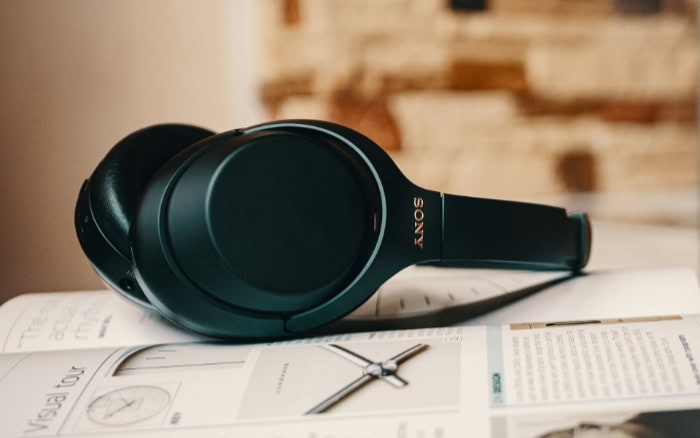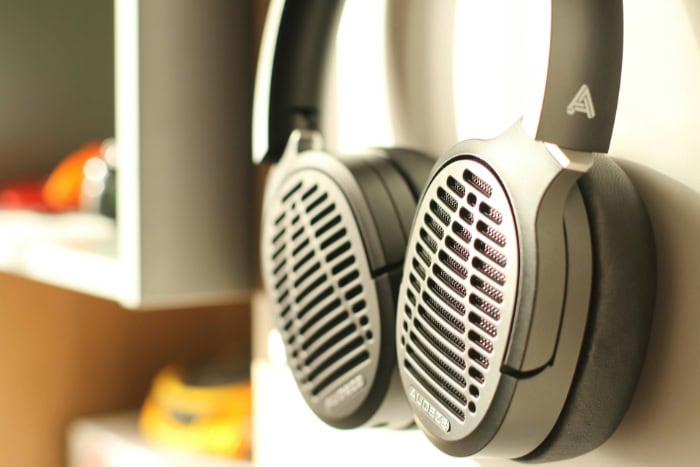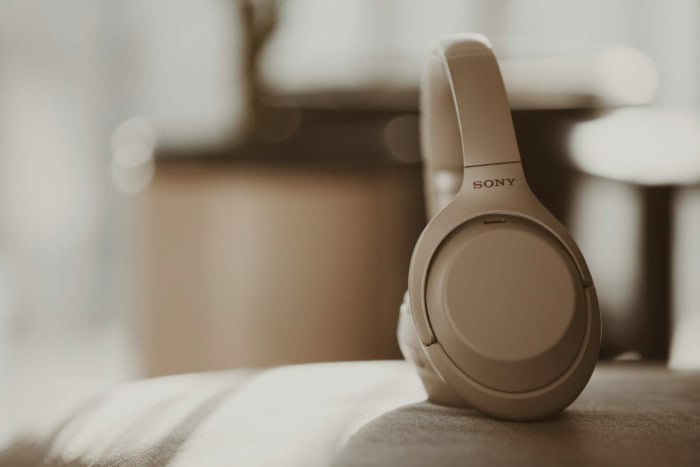Active vs. Passive Noise Cancellation: Which Is Better?

Sound matters. From bustling city streets to noisy office spaces, our world bombards us with constant acoustic interference.
Noise cancellation stands as one of audio technology's most significant achievements, offering two distinct solutions: active and passive systems. These innovations have redefined how we control our sonic environment, creating spaces of clarity within chaos.
Active noise cancellation harnesses sophisticated electronics and sound physics, while passive systems utilize advanced materials and precision engineering. Each approach tackles the challenge of unwanted noise through unique mechanisms, offering different advantages for specific situations and user needs.
Fundamental Technology
Noise cancellation technologies represent two distinct approaches to creating a quieter listening environment. Both active and passive systems serve unique purposes in audio equipment, each employing different principles to reduce unwanted sounds.
These methods can work independently or combine to provide enhanced noise reduction capabilities in modern headphones and earbuds.
Active Noise Cancellation
Active noise cancellation (ANC) operates through sophisticated electronic systems that create anti-noise signals. The fundamental principle relies on destructive interference – a physics concept where sound waves with opposite phases cancel each other out.
Think of dropping two stones in a pond: where the ripples meet, they can either amplify or neutralize each other. ANC technology produces sound waves that mirror incoming noise but in reverse, effectively neutralizing it before it reaches your ears.
The system begins with tiny microphones placed strategically on the headphones or earbuds. These microphones continuously sample ambient noise from the environment, sending this information to a dedicated processor.
The processor analyzes the incoming sound waves' frequency, amplitude, and phase characteristics within milliseconds. It then generates an inverse waveform – essentially the same sound but flipped upside down on the wave spectrum.
Modern ANC systems incorporate multiple microphones and advanced digital signal processing (DSP) chips to handle this complex task.
Some designs use both external and internal microphones – external ones detect incoming noise, while internal ones monitor the sound reaching your ears, allowing the system to make real-time adjustments for optimal performance.
Passive Noise Cancellation
Passive noise cancellation relies on physical barriers and acoustic engineering to block external sounds. Unlike its active counterpart, passive noise cancellation doesn't require power or electronic components.
Instead, it uses carefully selected materials and design elements to create an effective sound barrier between your ears and the environment.
The science behind passive noise cancellation involves several layers of defense against sound transmission. Dense materials like memory foam and specialized acoustic materials absorb sound waves, converting sound energy into minimal amounts of heat through friction.
Multiple layers of different materials can target various frequency ranges, creating a more comprehensive noise reduction solution.
The effectiveness of passive noise cancellation heavily depends on the quality of the seal between the audio device and your ears. Over-ear headphones use cushions that encompass the entire ear, creating an acoustic barrier.
For earbuds, manufacturers provide various sizes of ear tips, often made from silicone or foam materials. These tips must fit snugly in the ear canal to prevent sound leakage and maintain isolation.
Modern passive noise cancellation designs incorporate advanced materials like closed-cell foam, which contains tiny air pockets that trap and dissipate sound waves.
Some manufacturers use multiple-density foams or combine different materials to achieve optimal noise reduction across different frequency ranges.
The physical design of the headphones or earbuds also plays a crucial role – factors like the shape of the ear cups, the pressure distribution of the headband, and the overall construction quality all contribute to passive noise isolation effectiveness.
Through careful engineering of these physical elements, passive noise cancellation can achieve significant noise reduction without requiring any power or complex electronics.
This simplicity makes it particularly reliable and cost-effective, though its performance varies depending on the quality of materials and construction.
Performance Analysis

The effectiveness of noise cancellation technologies varies significantly across different sound frequencies and environments. Both active and passive systems demonstrate distinct strengths and limitations in their ability to reduce unwanted noise while maintaining audio quality.
Frequency Response
Active noise cancellation (ANC) excels at reducing low-frequency sounds, typically below 1000 Hz. These include the steady hum of airplane engines, train noise, air conditioning systems, and other consistent, low-pitched sounds.
The technology performs exceptionally well in these scenarios because low-frequency sound waves have longer wavelengths, giving ANC systems more time to analyze and generate counteracting signals.
Mid-frequency sounds present a more complex challenge for both active and passive systems. ANC becomes less effective as frequencies increase, while passive isolation starts to show its strengths.
The physical barriers in passive noise cancellation work particularly well against mid to high-frequency sounds, such as human voices, typing noises, and general office chatter.
High-frequency sounds, like whistles or electronic beeps, are primarily handled by passive isolation. At these frequencies, the wavelengths become too short for ANC to process effectively.
However, well-designed passive noise isolation can reduce these higher frequencies by up to 30-40 decibels through physical blocking and absorption.
Environmental noise types also play a crucial role in performance evaluation. Consistent, predictable noises are easier for ANC to combat compared to sudden, irregular sounds.
Passive isolation maintains steady performance regardless of the noise pattern, though its effectiveness depends entirely on the quality of the physical seal and materials used.
Sound Quality Impact
The implementation of noise cancellation technologies can significantly affect the overall audio experience. Active noise cancellation systems process audio signals in real-time, which can introduce subtle changes to the sound signature.
High-quality ANC systems minimize these effects through sophisticated signal processing algorithms, but some users might notice slight alterations in the bass response or overall clarity.
Natural sound preservation becomes particularly important for audiophiles and music enthusiasts.
Premium ANC headphones employ advanced processors that separate music from ambient noise, ensuring the original audio remains unaltered while still reducing unwanted external sounds.
Some manufacturers include adjustable ANC levels, allowing users to find the perfect balance between noise reduction and sound quality.
Ambient awareness features have become increasingly sophisticated in modern noise-cancelling headphones. Many devices now offer transparency modes that allow users to hear their surroundings without removing their headphones.
These systems can amplify external sounds selectively, making it possible to hold conversations or stay aware of important environmental cues while still enjoying music.
The interaction between noise cancellation and audio quality also extends to microphone performance for calls and voice commands. Active systems must carefully balance noise reduction with voice clarity, ensuring that speech remains natural and intelligible.
Advanced models use dedicated voice-pickup units and specialized algorithms to maintain clear communication while still blocking unwanted background noise.
Passive noise cancellation typically has minimal impact on sound quality since it doesn't involve signal processing. However, the acoustic properties of the materials used can influence the overall frequency response.
Well-designed passive isolation can actually enhance the listening experience by creating a more intimate soundstage and reducing the need to increase volume levels to overcome ambient noise.
Practical Applications

Noise cancellation technology serves various real-world scenarios, from daily commutes to professional environments. The effectiveness of both active and passive systems varies depending on the specific environment and use case, making certain features more valuable in particular situations.
Travel and Transportation
Transportation environments present some of the most challenging noise conditions for listeners. Aircraft cabins generate persistent low-frequency engine noise and air pressure changes that can cause discomfort during long flights.
Active noise cancellation proves particularly effective in these situations, reducing engine drone by up to 40 decibels.
This reduction creates a more comfortable environment for passengers, allowing them to enjoy entertainment or rest without increasing audio volume to potentially harmful levels.
Public transit scenarios, such as buses and trains, create different acoustic challenges. The combination of engine noise, wheel-rail contact, and general passenger activity produces a complex sound environment.
Modern noise-cancelling headphones adapt to these varying conditions through sophisticated algorithms that continuously adjust their response. Many premium models include pressure-equalization vents that help minimize the sensation of ear pressure changes during transit.
Urban environments add another layer of complexity to noise cancellation requirements. City streets mix traffic noise, construction sounds, and human activity, creating an unpredictable acoustic landscape.
Advanced noise-cancelling systems now incorporate adaptive modes that automatically adjust to changing noise levels and types. This flexibility proves particularly valuable for pedestrians and cyclists who need to maintain environmental awareness while enjoying audio content.
Professional Use
Professional environments demand specific noise cancellation capabilities tailored to workplace requirements. Office settings present unique challenges with their mix of keyboard clicks, conversation, and HVAC system noise.
Active noise cancellation helps professionals maintain focus by reducing these distractions while allowing them to remain aware of important communications.
Many modern headphones include voice detection features that automatically adjust noise cancellation levels when someone speaks directly to the user.
Studio monitoring applications require exceptional audio accuracy alongside noise isolation. Professional audio engineers and musicians often prefer passive noise cancellation for its neutral impact on sound quality.
High-end studio headphones utilize specialized acoustic materials and precise ear cup designs to achieve professional-grade isolation without affecting the original audio signal. This natural sound preservation becomes crucial for accurate mixing and mastering work.
Industrial settings pose perhaps the most demanding challenges for noise cancellation technology. Manufacturing floors, construction sites, and other high-noise environments often exceed safe listening levels.
Here, both active and passive technologies work together to provide maximum protection. Industrial-grade noise-cancelling headphones must meet specific safety standards while maintaining clear communication capabilities for worker safety.
These professional applications often require additional features beyond basic noise cancellation.
Many models include programmable touch controls for quick mode switching, multi-device connectivity for seamless transitions between different audio sources, and extended battery life for full workday use.
Some professional-grade headphones also incorporate specialized features like voice priority modes for clear team communication in noisy environments.
The durability requirements also vary significantly across professional applications. Office headphones prioritize comfort and style, while industrial models focus on rugged construction and safety certifications.
Studio equipment emphasizes precise acoustic performance and replaceable components for long-term maintenance.
User Experience Factors

The practical value of noise-cancelling headphones extends beyond their technical capabilities. Daily usability depends heavily on physical comfort, design elements, and power management features.
These factors significantly influence user satisfaction and determine how effectively people can utilize the technology in their daily lives.
Comfort and Design
Physical comfort plays a crucial role in the usability of noise-cancelling headphones, particularly during extended wearing periods. The weight of the headphones directly impacts user comfort, with active noise-cancelling models typically weighing more due to additional electronics and batteries.
Premium manufacturers address this challenge by using lightweight materials like aluminum and carbon fiber composites, carefully distributing weight across the headband and ear cups.
Long-term wearing comfort relies on several design elements working in harmony. The headband's clamping force must balance secure positioning with pressure distribution to prevent discomfort.
Quality padding materials, such as memory foam and protein leather, help maintain comfort during extended use. Many high-end models incorporate moisture-wicking materials and ventilation systems to reduce heat buildup around the ears.
Fit customization has evolved significantly in modern designs. Adjustable headbands accommodate different head sizes, while rotating ear cups allow for personalized positioning.
For in-ear models, manufacturers typically provide multiple sizes of ear tips in different materials. Some premium earbuds include custom-molding features where the ear tips adjust to the unique shape of each user's ear canal over time.
The aesthetic design also influences the user experience, particularly in professional settings. Modern noise-cancelling headphones often feature minimalist designs with touch-sensitive controls integrated into the ear cups.
These controls must remain accessible and responsive while maintaining the sleek appearance users expect from premium audio devices.
Power Management
Battery performance forms a critical aspect of active noise-cancelling headphones' usability. Modern devices typically offer between 20 to 40 hours of continuous use with noise cancellation enabled.
This duration varies significantly based on usage patterns, volume levels, and additional features like bluetooth connectivity or spatial audio processing.
Charging requirements vary across different models and brands. Most current devices use USB-C connections for faster charging, with many offering quick-charge capabilities that provide several hours of use from just 10-15 minutes of charging time.
Some premium models include wireless charging options, allowing users to charge their headphones through Qi-compatible charging pads.
Passive fallback capabilities provide essential backup functionality when battery power runs low. Quality noise-cancelling headphones continue to function as regular headphones even without power, maintaining passive noise isolation through their physical design.
Some manufacturers enhance this feature by optimizing the acoustic properties of their headphones for unpowered use, ensuring acceptable audio quality even without active noise cancellation.
Advanced power management features help extend battery life and improve user convenience. Smart power systems can detect when headphones are removed and automatically pause both music and noise cancellation.
Adjustable noise cancellation levels allow users to balance performance with battery life based on their environment and needs. Many modern models also include mobile apps that provide detailed battery status information and power consumption analytics.
The integration of power management with daily use patterns has become more sophisticated. Multi-point connectivity allows headphones to maintain connections with multiple devices while minimizing power consumption.
Some models include adaptive power management that automatically adjusts noise cancellation intensity based on environmental conditions, optimizing both performance and battery life.
Cost-Benefit Analysis

The financial aspects of noise-cancelling headphones require careful consideration beyond the initial price tag. Various factors influence both short-term costs and long-term value, making it essential to evaluate the complete ownership experience rather than focusing solely on purchase price.
Initial Investment
Noise-cancelling headphones command a significant price premium compared to standard audio devices. Active noise cancellation technology requires sophisticated electronics, including microphones, processors, and battery systems.
These components substantially increase manufacturing costs, which reflects in retail prices. Premium models featuring advanced noise cancellation capabilities often range from $200 to $400, while top-tier options can exceed $500.
Component quality plays a substantial role in determining price points. High-end models utilize premium materials such as custom-designed drivers, advanced digital signal processors, and high-grade noise-sensing microphones.
These superior components contribute to better noise cancellation performance and sound quality but also raise production costs. Manufacturing precision and quality control measures further add to the expense, particularly in products from established audio brands.
Maintenance considerations factor into the initial purchase decision. Some models feature replaceable ear cushions and batteries, while others require complete unit replacement when these components wear out.
Premium manufacturers often provide warranty coverage for their noise-cancelling technology, though coverage terms vary significantly. Additional costs might include protective cases, spare ear tips for in-ear models, or specialized cleaning tools to maintain optimal performance.
Long-term Value
The durability of noise-cancelling headphones significantly impacts their overall value proposition. Build quality varies considerably across price ranges, affecting how well the devices withstand daily use.
Premium models often incorporate reinforced headbands, metal components, and moisture-resistant materials that extend their useful life. The quality of hinges, cables, and connection points particularly influences long-term reliability.
Usage efficiency relates directly to value over time. Well-designed noise-cancelling headphones can reduce listening fatigue by allowing lower volume levels in noisy environments.
his benefit not only enhances the listening experience but also helps preserve hearing health. Additionally, efficient noise cancellation can improve productivity in work environments by minimizing distractions, potentially offsetting the initial investment through increased work efficiency.
Performance retention becomes apparent over extended use periods. Quality noise-cancelling headphones maintain their effectiveness even after years of regular use.
The stability of noise cancellation algorithms, reliability of mechanical components, and durability of acoustic materials all contribute to sustained performance.
Higher-end models often include firmware update capabilities, allowing manufacturers to improve performance and add features over time.
The cost efficiency also depends on usage patterns and environments. Frequent travelers might find premium noise-cancelling headphones more cost-effective due to improved comfort and noise reduction during long flights or commutes.
Professional users in noisy environments might justify higher initial costs through improved communication clarity and reduced stress levels. Regular software updates and feature additions from manufacturers can enhance value by extending functionality beyond the original purchase specifications.
Conclusion
Active and passive noise cancellation technologies offer distinct advantages for different listening scenarios. Each system excels in specific environments – active cancellation proves superior for constant, low-frequency noise reduction, while passive isolation effectively blocks higher-frequency sounds.
Modern headphones often combine both approaches, delivering comprehensive noise reduction across the frequency spectrum.
Personal needs and usage patterns should guide technology selection. Frequent travelers benefit from active noise cancellation's ability to reduce engine drone, while studio professionals might prefer passive isolation's neutral sound characteristics.
Build quality, comfort features, and battery life significantly influence daily usability and long-term satisfaction.
Price considerations reflect both immediate and future value. Premium models command higher prices but often deliver superior performance, durability, and feature sets.
Smart investment in noise-cancelling headphones pays dividends through enhanced audio experiences, reduced listening fatigue, and improved focus in noisy environments.


